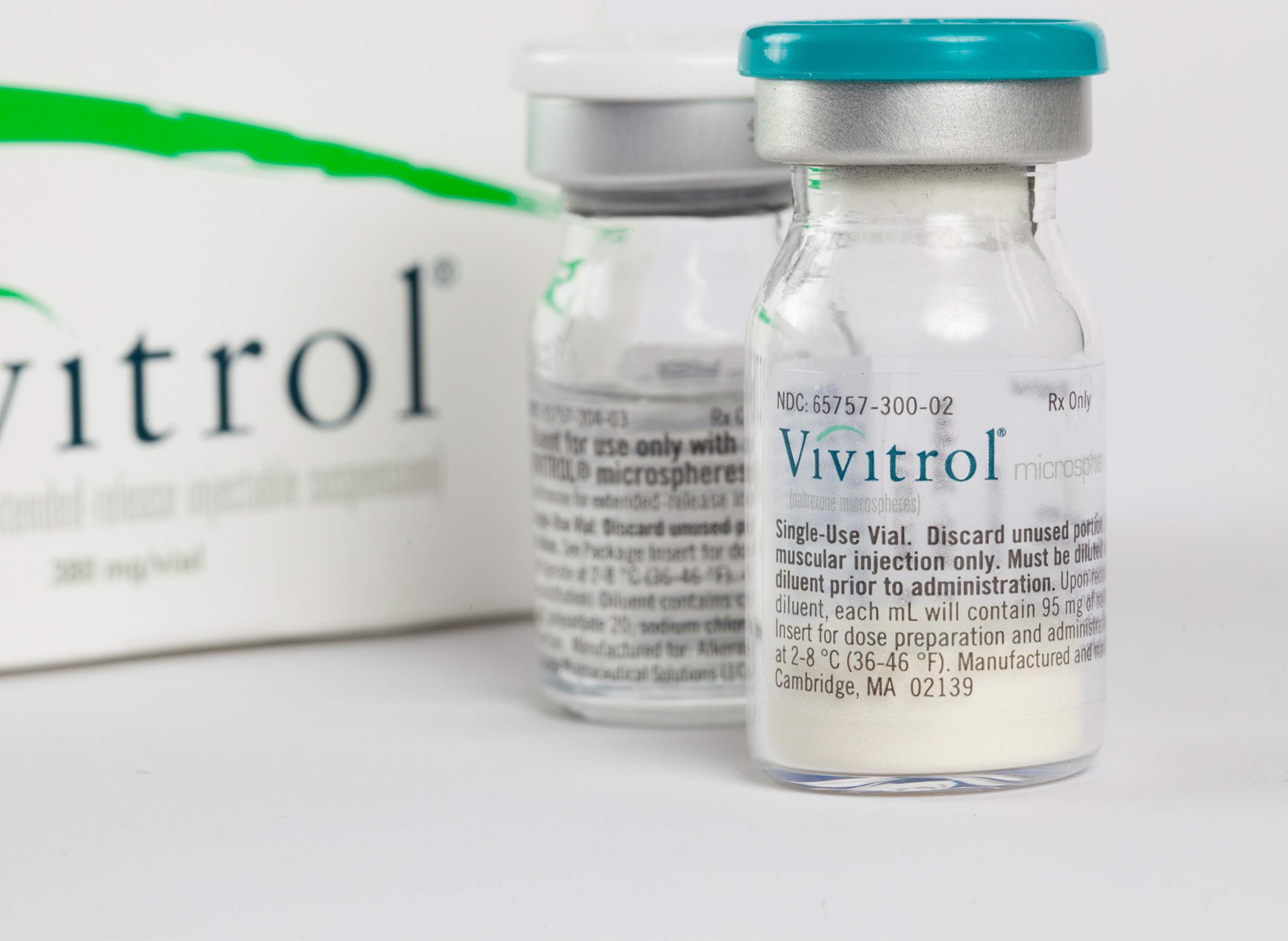
Vivitrol is the brand name of a proprietary treatment for alcohol and opioid addiction.

Vivitrol is the brand name of a proprietary treatment for alcohol and opioid addiction.
Wisconsin has responded to the nationwide rise in opioid addiction — fueled by cheap heroin, pain pills, and more recently fentanyl — with a series of bills that emphasize treatment over criminalization. But some of the state's initiatives focus on people already caught up in the criminal justice system.
One of these initiatives is by the Wisconsin Department of Corrections, which launched a $1.75 million pilot program to provide an injectable treatment called Vivitrol, targeted at inmates nearing release and people on probation or parole. This program launched in 2016 and is focused on DOC's five Green Bay-area facilities. It currently has 49 people getting monthly Vivitrol injections, DOC Secretary Jon Litscher said in a Nov. 23, 2016 interview with Wisconsin Public Television's Here And Now.
Litscher, who also serves on Wisconsin's recently created opioid task force, is optimistic about Vivitrol's record of cutting down on relapses. Additionally, when people are less likely to relapse, that also means they're less likely to violate the terms of probation and get more deeply entangled in the criminal justice system.
Litscher discussed some of the potential pitfalls of Vivitrol treatment, and noted the state is still waiting on an empirical evaluation of the program. "We have anecdotal evidence but we just don't have the concrete statistical data," he said.
Vivitrol is the brand name for an injectable form of naltrexone used by the publicly traded pharmaceutical company Alkermes. (DOC's funding request to the state legislature for the program referred to it by brand name.)
Vivitrol first received federal approval in 2006 as a treatment for alcohol dependence, and was approved for opioid addiction treatment in 2010. It didn't make much money as an alcoholism treatment, but has taken off amid the opioid epidemic. As Bloomberg reported in April 2016, analysts projected that sales of Vivitrol will surpass $200 million in 2017, and that's despite its hefty price tag, which can be as high as $1,300 per shot. Alkermes has spent millions lobbying state and federal officials scrambling to expand opioid treatment, and those efforts include Wisconsin's legislature.
Patients and treatment providers have to be careful when using naltrexone, Litscher admitted, noting that physicians on the state opioid task force had been vocal about the risks.
To receive a Vivitrol injection, a patient has to be opioid- and alcohol-free for at least seven days, or the treatment can cause "a very serious reaction and withdrawal problem," Litscher said. Additionally, because naltrexone works by blocking opioid receptors, someone who relapses with opioids might not feel much effect from dosages that used to get them high, meaning they're at greater risk of overdosing.
Elsewhere in the state, other agencies and treatment providers, including the Madison-based Journey Mental Health Center, have also tried pilot programs with Vivitrol.
Manufacturers of opioid treatments like naltrexone and buprenorphine (best known as the commercial formulation Suboxone, manufactured by Invidior) benefit from stigma and misconceptions surrounding methadone, which has been used to treat people addicted to heroin and narcotics for years.
Of course, methadone is a for-profit concern too: It's manufactured by private companies under various brand names, and methadone clinics in Wisconsin are all run by private for-profit companies. That's in keeping with a nationwide shift over the past 20 years in which methadone treatment has largely moved from the public to the private sector, said Michael Miller, medical director of the Herrington Recovery Center at Rogers Memorial Hospital in Oconomowoc and a board member with the American Board of Addiction Medicine.
Policymakers, the general public and even medical professionals have had decades to develop their perspectives on methadone treatment. These attitudes can be pretty skeptical, in part because methadone itself is an opioid, though it generally can't provide anything resembling the high of heroin. Naltrexone and buprenorphine, on the other hand, work by blocking opioid receptors in the brain, although the latter is actually an opioid as well. These drugs are newer on the landscape, and as noted, brand-name versions like Vivitrol and Suboxone benefit from significant marketing and lobbying muscle. Moreover, these newer drugs can be prescribed by individual doctors out of their own practices, whereas methadone can only be dispensed through specialized addiction clinics.
A monthly Vivitrol injection has obvious advantages over daily methadone doses, which are tightly regulated and must be dispensed in-person at licensed clinics. Opioid addiction and deaths have escalated in urban, suburban and rural areas of Wisconsin, while methadone clinics tend to be concentrated in the state's most densely populated areas. Many people in urban areas need treatment as well, but it's difficult for someone living farther away from a larger city to maintain a healthy lifestyle and a job and make a long drive every day for treatment.
People receiving methadone treatments must work their way up to getting take-home doses. And until recently, the state required that anyone receiving methadone live within 50 miles of their clinic. That requirement has been loosened, but that doesn't remove the obvious practical barrier of daily travel.
This suggests another advantage in DOC's approach. Litscher pointed out that Vivitrol's monthly injection schedule makes it easier for offenders to pull their lives back together after being released.
"It's less intrusive in an offender's life when he wants to go to work," he said.